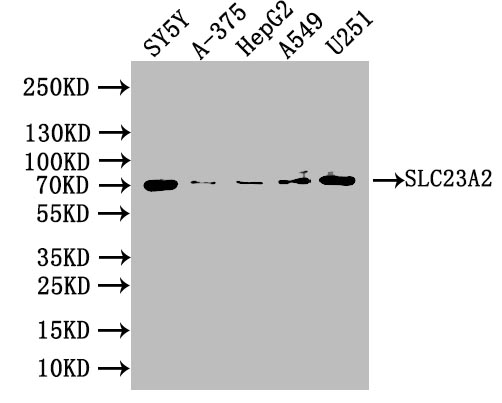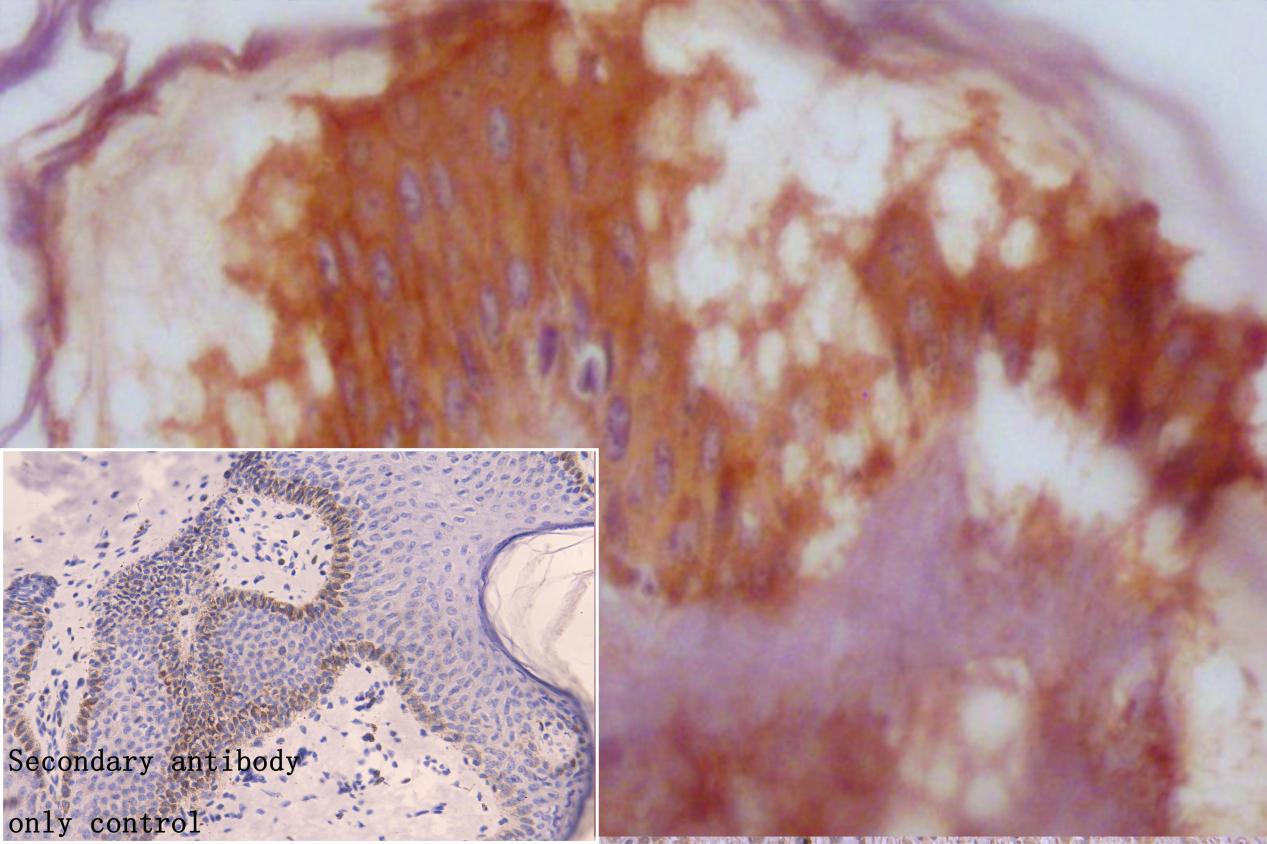Full Product Name
Rabbit anti-Homo sapiens (Human) SLC23A2 Polyclonal antibody
Alternative Names
SLC23A2 antibody; KIAA0238 antibody; NBTL1 antibody; SLC23A1 antibody; SVCT2 antibody; YSPL2 antibody; Solute carrier family 23 member 2 antibody; Na(+)/L-ascorbic acid transporter 2 antibody; Nucleobase transporter-like 1 protein antibody; Sodium-dependent vitamin C transporter 2 antibody; hSVCT2 antibody; Yolk sac permease-like molecule 2 antibody
Immunogen
Recombinant Human Solute carrier family 23 member 2 protein (1-90AA)
Immunogen Species
Homo sapiens (Human)
Purification Method
Antigen Affinity Purified
Concentration
It differs from different batches. Please contact us to confirm it.
Buffer
PBS with 0.02% sodium azide, 50% glycerol, pH7.3.
Tested Applications
ELISA, WB, IHC
Recommended Dilution
| Application |
Recommended Dilution |
| WB |
1:1000-1:5000 |
| IHC |
1:20-1:200 |
Storage
Upon receipt, store at -20°C or -80°C. Avoid repeated freeze.
Lead Time
Basically, we can dispatch the products out in 1-3 working days after receiving your orders. Delivery time maybe differs from different purchasing way or location, please kindly consult your local distributors for specific delivery time.
Description
The SLC23A2 antibody is inducibly produced by recombinant human solute carrier family 23 member 2 protein (1-90AA) in the rabbit. It is intended for the detection of SLC23A2 protein of human origin. This unconjugated SLC23A2 antibody exists as an IgG isoform. It underwent purification by antigen affinity method. And it is subjected to quality control in applications, including ELISA, WB, and IHC. Its target protein SLC23A2 is present in most cell types and mediates ascorbic acid transport across the cell membrane with high affinity.
Usage
For Research Use Only. Not for use in diagnostic or therapeutic procedures.







